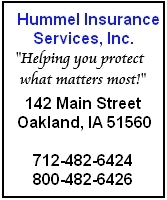Iowa DOT’s major construction projects website now available – See more at: http://www.news.iowadot.gov/newsandinfo/2015/05/iowa-dots-major-construction-projects-website-now-available
May 18th, 2015 by Ric Hanson
Just in time for the Memorial Day weekend, the Iowa Department of Transportation’s 2015 major construction project website is now available to provide motorists information about the location of major Iowa DOT construction projects that may impact travel.
The site, http://www.iowadot.gov/travel.html#/highwayconstruction, includes an interactive map containing the 47 highway or bridge projects across Iowa that have the potential to cause a major impact to the traveling public. It provides detailed information about each project, including the project location, description, start date, completion date, contracted cost, and more, updated weekly. The map does not contain all Iowa DOT projects that are happening this construction season.
“People often want to see an overview of the larger projects the Iowa DOT is working on and the areas of the state that are being impacted. The website allows us to offer this information to our customers,” said Mark Bortle, Iowa DOT’s traffic safety engineer. “This year we’ve made several improvements to the website including look, layout, and ease of navigating through the information.”
The construction website complements www.511ia.org, the Iowa DOT’s traveler information website that provides the most up-to-date information to help motorists plan their trip. You can also access 511 by calling 511 (in Iowa) or 800-288-1047 (nationwide) or following 511 on Twitter @iowadot or @statewideia511.
For calendar year 2015, the Iowa DOT is anticipating to complete approximately $700 million in repairs to Iowa’s state highway system. Cities and counties across the state will have numerous projects underway as well.
As construction season gets into full swing it is important that motorists keep an eye out for the many family members, friends, and neighbors out working on the roads to improve safety for all of us.
Following a few simple guidelines can greatly improve safety in a work zone for both drivers and workers.
Expect the unexpected in any work zone along any road. Speed limits may be reduced, traffic lanes may be changed, and people and equipment may be at work on or near the road.
Slow down. Be alert. Pay attention to the signs. Diamond-shaped orange warning signs are generally posted in advance of road construction projects. Observe the posted signs until you see the one that marks the end of the work zone.
Watch out for flaggers. In addition to other warning signs, a “flagger ahead” warning sign may be posted in the work zone. Stay alert and be prepared to obey the flagger’s directions. In a work zone, a flagger has the same authority as a regulatory sign, so you can be cited for disobeying his or her directions.
Merge as soon as possible. Do not zoom right up to the lane closure, then try to barge in – if everyone cooperates, traffic moves more efficiently. Motorists can help maintain traffic flow and posted speeds by moving to the appropriate lane as quickly and safely as possible after first notice of an approaching work zone.
Slow down when directed. A car traveling 60 mph travels 88 feet per second. If you are going 60 mph and you pass a sign that reads “Road Work 1500 feet,” you will be in that work zone in 17 seconds.
Don’t tailgate. The most common crash in a highway work zone is the rear-end collision; so, remember to leave at least two seconds of braking distance between you and the vehicle in front of you. Keep a safe distance between your vehicle and traffic barriers, trucks, construction equipment, and workers.
Work zones may be mobile. Some work zones – like line painting, road patching, shoulder repair, and mowing – are mobile and advance as the work is finished. Just because you do not see the workers immediately after you see the warning sign does not mean they are not present in the area.
Expect delays. Plan ahead and leave early to reach your destination on time. Highway agencies use many different ways to inform motorists about the location and duration of major work zones. Often, agencies will suggest a detour to help you avoid the work zone entirely. Plan ahead and try an alternate route.





